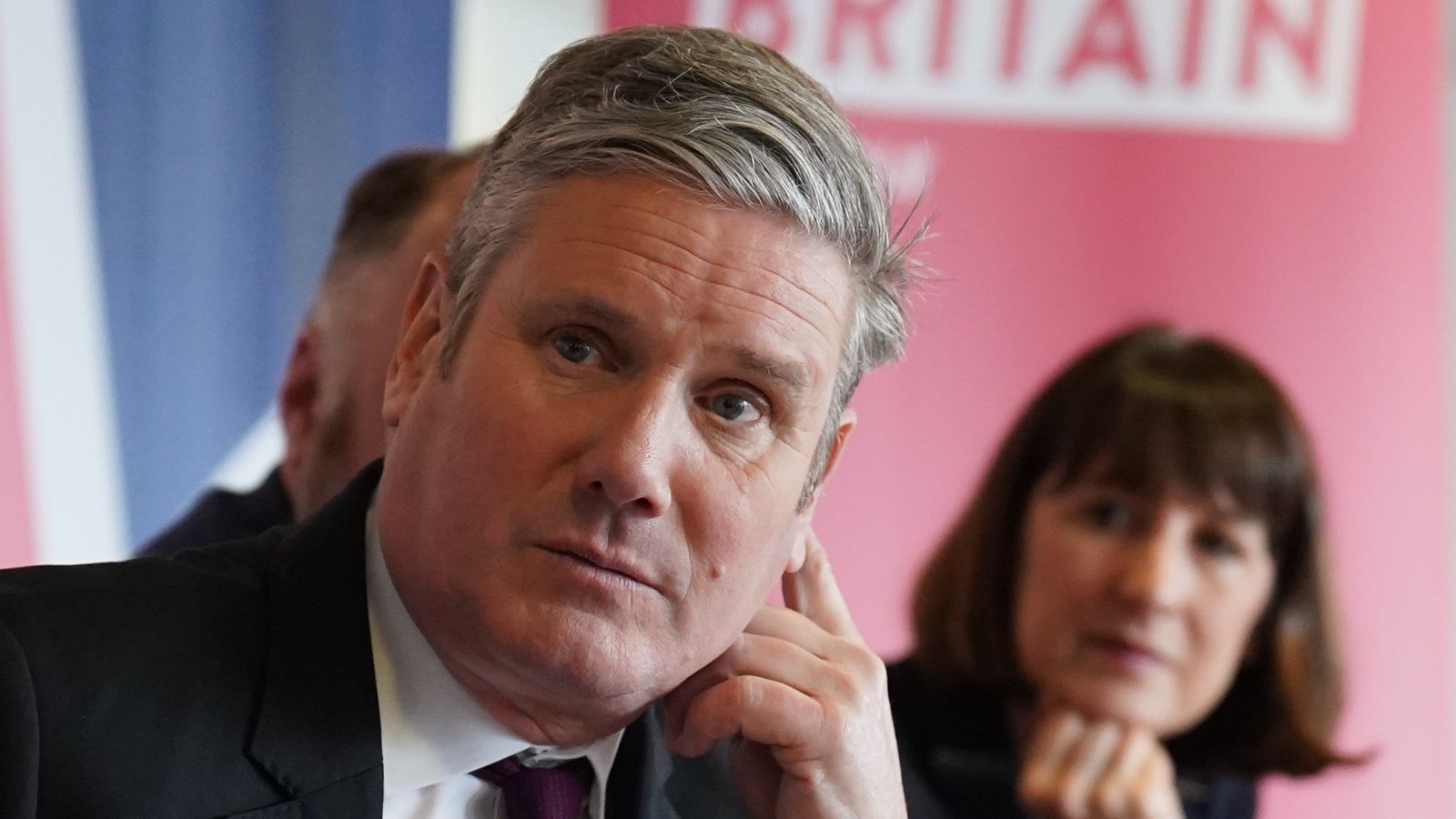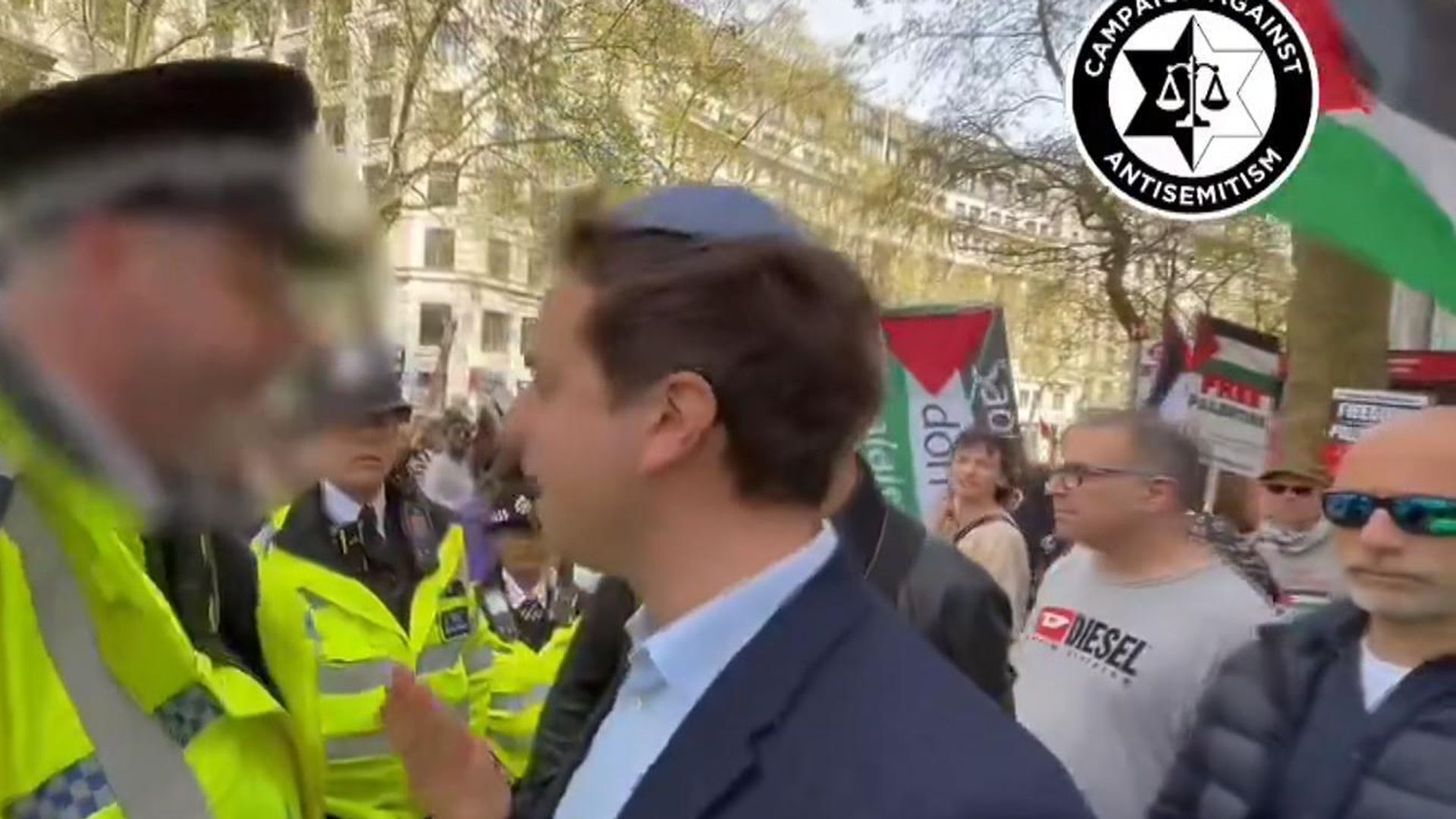Labour is feeling positive after strong local election results rolled in from across England last week.
The party gained 536 seats and control of an additional 22 councils, making it the largest force in local government for the first time in over 20 years.
Leader Sir Keir Starmer seized on the moment to claim the country was “on course for a Labour majority” after the next general election.
But it may not be quite that straightforward…
Politics live: Sunak and Starmer face off at first PMQs after local elections
Sky News’ national estimated vote share showed that if you extrapolated the results into a uniform swing across the UK, Labour would be the largest party in a national ballot – but fall 28 seats short of a majority.
So, if that scenario were to materialise, what would be Sir Keir’s options to get his hands on the keys to Number 10?
‘Deniable’ post-election deal talks with Labour will be happening, former Liberal Democrat leader Sir Vince Cable says
Sir Keir Starmer is desperate for a majority – but knows he may fall short
Sir Keir Starmer refuses seven times to rule out deal with Liberal Democrats as projections show hung parliament
Coalition with the SNP or Liberal Democrats
The magic number of seats needed to get over the line is 326, so perhaps the obvious solution for Labour would be to form a coalition with another party.
One option would be the SNP, which currently holds 45 seats in the Commons. This theoretically would give the government a majority of 17.
However, even the suggestion of joining up with the political force north of the border has caused Labour major headaches in the past.
In the run-up to the 2015 election, the Conservatives used it as their main assault against the opposition, with David Cameron famously tweeting there would be “chaos” under a government led by then Labour leader Ed Miliband alongside the SNP.
The Tories launched a series of attack ads, showing a sheepish-looking mini Mr Miliband in the pocket of then First Minister Nicola Sturgeon, as well as her predecessor Alex Salmond.
The Labour leader ruled out any deal, but the targeted campaign – following a tumultuous independence referendum in 2014 – ensured the message made it through to the public, and an internal inquiry into the party’s election defeat showed it had impacted the result.
Sir Keir has already ruled out a coalition with the SNP multiple times – most recently in an interview with Sky News’ political editor, Beth Rigby – because he fundamentally disagrees with Scottish independence.
But as the 2015 election showed, it doesn’t mean the prospect won’t spook the rest of the country.
The SNP’s leader in Westminster, Stephen Flynn, has already claimed Sir Keir will “U-turn” on this pledge, and his party have made a list of demands to join forces, including seeking to “undo Brexit as far as possible”.
But it is important to remember this could also be a tactic by the SNP to damage Labour in Scotland, with polls showing they could see a resurgence at the ballot box after the exit of Ms Sturgeon from the top of the party, and its ongoing financial issues.
The other option would be a coalition with the Liberal Democrats.
Please use Chrome browser for a more accessible video player
Sir Ed Davey’s party also had a strong showing at the local elections – gaining 407 seats and overall control of an extra 12 councils.
Under the same national estimated vote share metric, they would hypothetically get 39 MPs at the next general election, making a majority of 11 if the two parties teamed up.
Former Lib Dem leader Vince Cable – also a minister in the coalition government with the Tories in 2010 – said on Wednesday the two parties would be having “serious, but deniable” conversations about what to do after the next election over the coming months.
But there may be some nervousness about reaching any deal.
While it is true the two parties are more closely aligned politically than the Lib Dems were with the Tories, they still diverge on a number of policies, such as how to tackle small boats and re-joining the EU.
This leaves them ripe for fresh attack ads, and Labour could fear this would lose them voters they are trying to win over from the Conservatives.
Please use Chrome browser for a more accessible video player
On top of that, the Lib Dems may not want to remind people of the last time they were in a coalition – Sir Ed was also a minister.
The five-year stint in power saw them vote with the Tories on austerity measures and abandon their student fees pledge, eventually leading to a collapse of their parliamentary party at the ballot box.
Yet, neither leader has ruled out the possibility of signing a deal after the general election.
Despite saying last year he wouldn’t join forces, Sir Keir this week failed to rule it out seven times in an interview with Beth Rigby.
Sir Ed also showed a similar level of avoidance to the question over the weekend.
Confidence and supply deal
If Labour decides not to enter into a formal coalition, a confidence and supply agreement could be a possibility for Sir Keir.
This would mean making an agreement with one party that they would support the government in motions of confidence and budgetary matters, but they would work on a case-by-case basis on other legislation.
The most recent example of this was a deal between Theresa May’s Conservative government and Northern Ireland’s Democratic Unionist Party (DUP) after the former prime minister lost her majority in the 2017 snap election.
Mrs May gave Northern Ireland an additional £1bn of funding for hospitals, schools and infrastructure on the basis they would support her as she tried to get her Brexit deal through parliament.
So the question would be, what would Labour have to offer to get either the Lib Dems or SNP on board – see the aforementioned EU demands, which Sir Keir will want to avoid to keep Brexit voters on side and not re-open the argument.
Also, Mrs May’s deal should act as a warning over the stability of such agreements, as the DUP eventually turned on her, seeing her deal fall and her swift exit from Downing Street.
Minority government
The other option for Labour would be to form a government and go it alone with a minority, negotiating support from other parties to pass legislation one piece at a time.
This would only be an option if all else fails, and even then, it would need the Conservatives to voluntarily leave government, as it is not technically mandatory that the largest party in the Commons forms the minority government.
It does seem an unlikely scenario. The trappings of a minority government means few laws make it past the finish line, and a general election ends up being held a few months later to end the stalemate.
We are still a year or more away from a general election and, as we know, even a week is a long time in politics, so it could all change by the time the nation heads to the polls.
But if Sir Keir keeps up the momentum from the local elections, even without a majority, there are many ways he could get his hands on the keys to Number 10.








